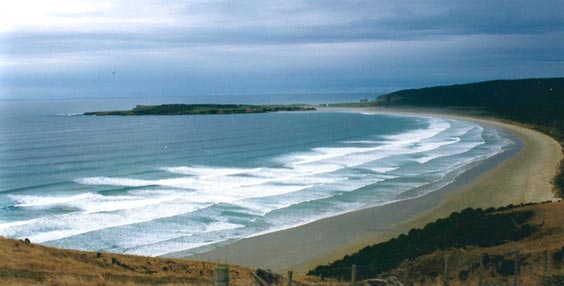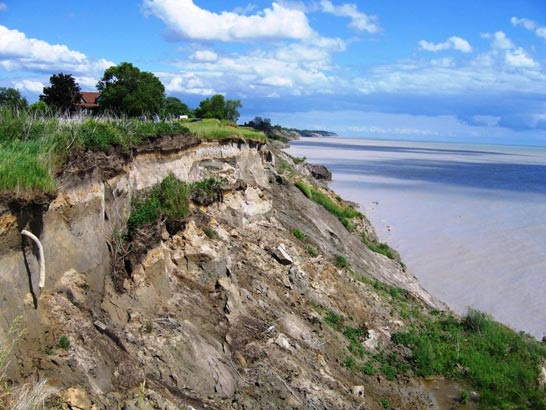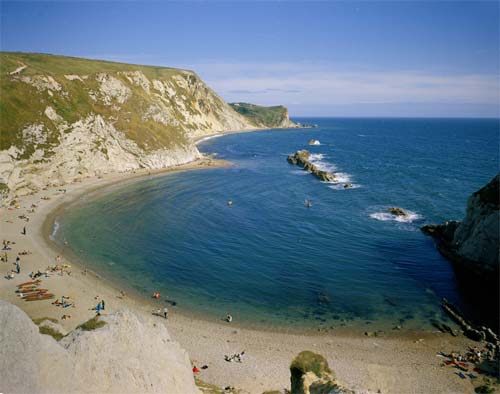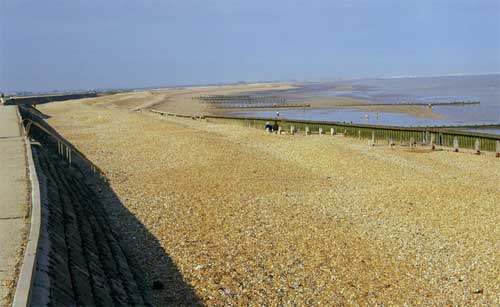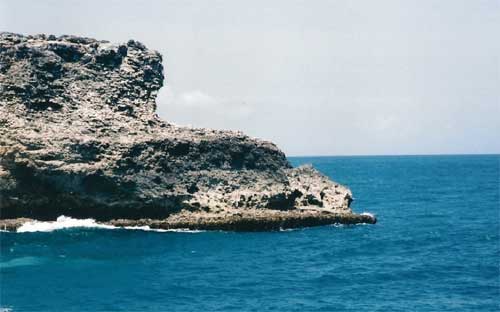Coasts
Waves form when the wind blows over a body of water  . In the open ocean waves look like a series of swells. When a wave gets near the shore the wave bottom drags against the sea floor while the top keeps moving. The wave gets narrower and higher and eventually topples over crashing onto the beach face.
. In the open ocean waves look like a series of swells. When a wave gets near the shore the wave bottom drags against the sea floor while the top keeps moving. The wave gets narrower and higher and eventually topples over crashing onto the beach face.
Some coasts are dominated by shoreline erosion. Waves pound the shore with water, sand and even rocks  . This can undercut cliffs causing large sections of rock and sediment to fall into the water.
. This can undercut cliffs causing large sections of rock and sediment to fall into the water.
Tides are the daily or twice-daily rise and fall of the oceans. Tides are caused by the gravitational pull of the moon and sun on the ocean.
Waves that hit the beach at an angle carry sand and gravel up the beach face at an angle. When the water washes back the sediment is carried straight back down the beach face. Individual particles are moved along the beach in a zig zag pattern. This is called longshore drift.
Beaches and spits that formed along the shore of glacial Lake Agassiz are shown in dark blue on the superficial geology map  of the Red River Valley area of Canada and the United States. There are six beaches on the western side of the map. The beaches formed as water levels slowly dropped.
of the Red River Valley area of Canada and the United States. There are six beaches on the western side of the map. The beaches formed as water levels slowly dropped.
Can you find matching beaches on the other side of the large purple area?
« Back 








